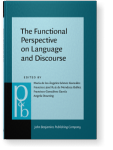How did we think?
This paper presents a diachronic corpus investigation into the Dutch mental
state predicate denken ‘think’. It investigates both the semantic development
(specifically, the evolution in the non-attitudinal vs. the attitudinal meanings of
the verb) and the grammatical development (the evolution in terms of the types
of grammatical patterns with which the verb appears), and the correlations
between the two, from Old Dutch onwards. The discussion focuses specifically
on the implications for our understanding of the processes of grammaticalisation
and subjectification, and their correlations: the verb shows clear signs of a
process of semantic subjectification, but not of structural grammaticalisation,
hence it offers evidence for the assumption that these two processes are less
intimately intertwined than is often assumed in the literature.
References (28)
References
Aijmer, Karin. 1997. “I think – An English Modal Particle.” In
Modality in Germanic Languages
, ed. by Toril Swan, and Olan J. Westvik, 1–48. Berlin: Mouton de Gruyter. 

Brinton, Laurel. 1996.
Pragmatic Markers in English
. Berlin: Mouton de Gruyter. 

Byloo, Pieter. 2009.
Modality and Negation
. PhD thesis, University of Antwerp.
CD-ROM Middelnederlands
. 1998. Den Haag: SDU.
Grondelaers, Stefan, Katrien Deygers, Hilde van Aken, Vicky van den Heede, and Dirk Speelman. 2000. “Het ConDiv-corpus geschreven Nederlands.”
Nederlandse Taalkunde
5: 356–363.
Hopper, Paul, and Elizabeth Traugott. 2003.
Grammaticalisation.
Cambridge: Cambridge University Press. 

Langacker, Ronald W. 1991.
Foundations of Cognitive Grammar
,
vol. 2
. Stanford: Stanford University Press.
Nederlandse Taalunie. 2004.
Corpus Gesproken Nederlands, Version 2.0
. Leiden: TST-Centrale INL.
Newmeyer, Frederick. 2010. “What Conversational English Tells Us about the Nature of Grammar.” In
Language Usage and Language Structure
, ed. by Kasper Boye, and Elisabeth Engberg-Pedersen, 3–43. Berlin: Mouton de Gruyter.
Nuyts, Jan. 1997. “How do you think?” In
A Fund of Ideas
, ed. by Christopher S. Butler, J. ��Connolly, R. Gatward, and R. Vismans, 3–18. Amsterdam: IFOTT.
Nuyts, Jan. 2001b. “Subjectivity as an Evidential Dimension in Epistemic Modal Expressions.”
Journal of Pragmatics
33: 383–400. 

Nuyts, Jan, and Wietske Vonk. 1999. “Epistemic Modality and Focus in Dutch.
” Linguistics
37: 699–737.
Östman, Jan-Ola. 1982. “The Symbiotic Relationship between Pragmatic Particles and Impromptu Speech.” In
Impromptu Speech
, ed. by Nils E. Enkvist, 147–177. Åbo: Åbo Akademi.
Persson, Gunnar. 1993. “Think in a Panchronic Perspective.”
Studia Neophilologica
65: 2–18. 

Simon-Vandenbergen, Anne-Marie. 1998. “I think and its Dutch Equivalents in Parliamentary Debates.” In
Corpora and Crosslinguistic Research
, ed. by Stig Johansson, and Signe Oksefjell, 297–317. Amsterdam: Rodopi.
Simon-Vandenbergen, Anne-Marie. 2000. “The Functions of I think in Political Discourse.”
International Journal of Applied Linguistics
10: 41–63. 

Stenström, Anna-Brita. 1995. “Some Remarks on Comment Clauses.” In
The Verb in Contemporary English
, ed. by Bas Aarts, and Charles F. Meyer, 290–301. Cambridge: Cambridge University Press.
Traugott, Elizabeth C. 2010. “(Inter)Subjectivity and (Inter)Subjectification.” In
Subjectification, Intersubjectification and Grammaticalisation
, ed. by Kristin Davidse, Lieven Vandelanotte, and Hubert Cuyckens, 29–71. Berlin: Mouton de Gruyter. 

Traugott, Elizabeth, and Richard Dasher. 2002.
Regularity in Semantic Change
. Cambridge: Cambridge University Press.
Van Bogaert, Julie. 2009.
The Grammar of Complement-Taking Mental Predicate Constructions in Present-Day Spoken British English
. PhD thesis, University of Ghent.
Cited by (1)
Cited by one other publication
Nuyts, Jan & Karolien Janssens
2019.
Parentheticals revisited: The case of Dutchdenken.
Folia Linguistica 53:s40-s2
► pp. 475 ff.

This list is based on CrossRef data as of 24 july 2024. Please note that it may not be complete. Sources presented here have been supplied by the respective publishers.
Any errors therein should be reported to them.
